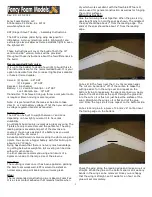
737 Flight Crew Operations Manual
Performance Inflight
Text
737-8/LEAP-1B27
FAA
CATB
PI.18.8
MN-FLT-OH-201
Tem
po
ra
ry
R
ev
is
io
n
To determine remaining fuel and time required, first enter the Ground to
Air Miles Conversion table (Table 1) to convert ground distance and
enroute wind to an equivalent still air distance. Next, enter the Reference
Fuel and Time table (Table 2) with air distance from Table 1 and the
desired altitude and read reference fuel and time required. Lastly, enter the
Fuel Required Adjustment table (Table 3) with the reference fuel and the
actual weight at checkpoint to obtain fuel required to destination.
Long Range Cruise Wind-Altitude Trade
Wind is a factor which may justify operations considerably below optimum
altitude. For example, a favorable wind component may have an effect on
ground speed which more than compensates for the loss in air range.
Using this table, it is possible to determine the break-even wind (advantage
necessary or disadvantage that can be tolerated) to maintain the same range
at another altitude and long range cruise speed. The tables make no
allowance for climb or descent time, fuel or distance, and are based on
comparing ground fuel mileage.
Descent at .78/280/250
Distance and time for descent are shown for a .78/280/250 descent speed
schedule. Enter the table with top of descent pressure altitude and read
distance in nautical miles and time in minutes. Data is based on flight idle
thrust descent in zero wind. Allowances are included for a straight-in
approach with gear down and landing flaps at the outer marker.
Holding
Target %N1, indicated airspeed and fuel flow per engine information is
tabulated for holding with Flaps Up based on the FMC optimum holding
speed schedule. This is the higher of the maximum endurance speed and
the maneuvering speed. Small variations in airspeed will not appreciably
affect the overall endurance time. Enter the table with weight and pressure
altitude to read %N1, IAS and fuel flow per engine.
Advisory Information
Runway Surface Condition Correlation
When landing on slippery runways or runways contaminated with ice,
snow, slush, or standing water, the reported braking action must be
considered. A table is provided that correlates runway condition code to
runway surface condition description and reported braking action that can
then be used to determine the appropriate Normal Configuration Landing
Distance or Non-Normal Configuration Landing Distance.
October 26, 2021










































